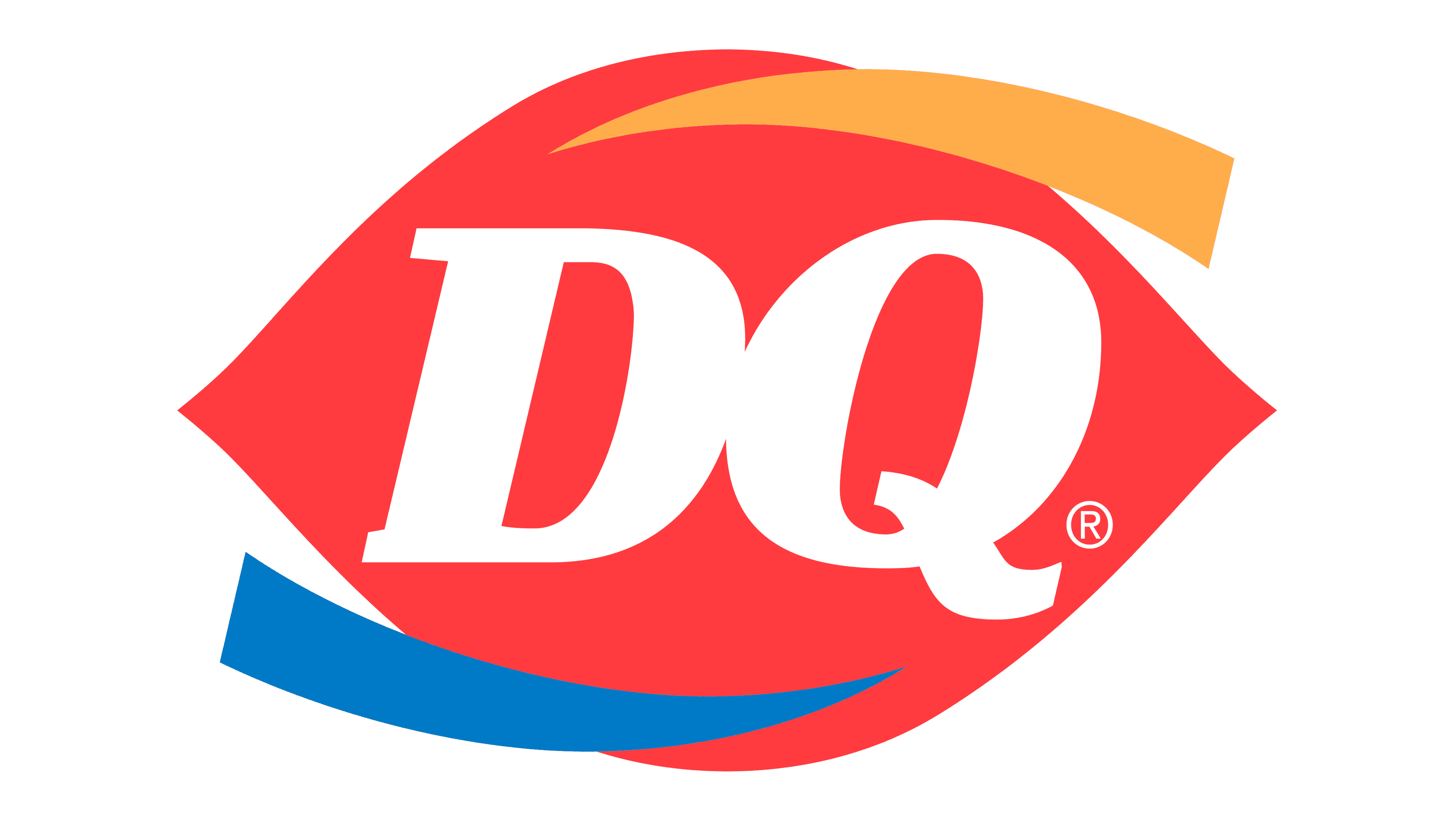Dairy Queen Logo
Dairy Queen is a renowned fast-food chain, famous for its soft-serve ice cream and wide range of fast-food items. Currently, Dairy Queen operates globally, with a strong presence in the United States, Canada, and several other countries. It’s known for its signature Blizzards, ice cream cakes, and a variety of burgers and sandwiches. Owned by Berkshire Hathaway since 1998, the company continues to expand its market reach, adapting menus to suit regional tastes. Dairy Queen’s adaptability and consistent quality have cemented its status as a staple in the quick-service restaurant industry.
Meaning and history
Dairy Queen’s story, a blend of innovation and tradition, began in 1940, when John Fremont McCullough and his son, Alex, crafted a unique soft-serve recipe, revolutionizing the ice cream industry. Their first store, launched in Joliet, Illinois and managed by Sherb Noble, was an immediate success, signaling the birth of a new culinary delight.
As the brand expanded, franchising became its growth engine, a pioneering move that led to over 100 stores by the late 1940s. Dairy Queen’s menu evolved, introducing the Dilly Bar in 1955, adding to its repertoire of frozen treats.
The 1960s and 1970s marked a period of significant change. The introduction of the Blizzard in 1968, a creamy concoction of soft-serve and mix-ins, became a customer favorite. The brand’s footprint went global in these decades, reaching audiences far beyond its American roots.
Dairy Queen’s ownership narrative is marked by transitions yet characterized by continuity. After its initial phase as a family-run business, it was acquired by a group of franchisees in 1962. This phase preceded a major shift in 1987 when Warren Buffett’s Berkshire Hathaway took the reins, ushering in an era of enhanced growth and stability.
The 2000s saw Dairy Queen adapting to new market trends with the Grill & Chill concept, diversifying into hot foods while retaining its famed frozen treats.
Dairy Queen stands as a global icon in the fast-food realm, a symbol of enduring appeal and innovative spirit. Its evolution from a modest ice cream shop to an international franchise mirrors the dynamic landscape of American business and culinary innovation.
What is Dairy Queen?
Dairy Queen, a trailblazer in the world of frozen treats, is renowned for its signature soft-serve ice cream and iconic Blizzards. Beyond its sweet offerings, the chain also serves a variety of fast-food items, making it a favorite for both dessert enthusiasts and those seeking a quick, satisfying meal. This global franchise has become a symbol of indulgence and joy for generations of customers.
1948 – 1959
The logo depicted is striking in its simplicity, employing bold, block-style lettering in solid black, conveying a sense of robustness and reliability. The typeface is sans-serif, which offers a modern, clean look, while the letters are evenly spaced, suggesting a well-organized and straightforward brand identity. Each character stands tall and unadorned, save for the letter ‘Q’ that is uniquely designed with an elongated tail, adding a touch of whimsy and setting the logo apart from more mundane designs. The overall effect is one of strength and familiarity, inviting trust and recognition in the viewer.
1959 – 2007
The logo radiates a bold and inviting aura with its vibrant red elliptical backdrop, framing the name ‘Dairy Queen’ in crisp, white lettering. The use of white against red creates a stark contrast, ensuring high visibility and recall. The font, while maintaining the sans-serif tradition for modernity, now features rounded edges, softening its appearance and adding a friendly touch.
This design marks a significant evolution from its predecessor. The previous logo’s monochromatic scheme and stark, blocky typeface gave way to a more dynamic and warmer presentation. The red color evokes feelings of passion and energy, aligning with the brand’s spirited approach to customer satisfaction. Moreover, the inclusion of the red color is not just an aesthetic choice; it’s a strategic one, often associated with appetite and gusto in the food industry.
Another notable change is the tail of the ‘Q’, which has been simplified, losing its elongated flourish in favor of a more subdued, yet still distinct, curve. The registered trademark symbol is now clearly present, signaling Dairy Queen’s growing emphasis on brand protection and identity. Overall, this logo’s transformation reflects Dairy Queen’s evolution and its commitment to remain fresh, contemporary, and appealing to a broad audience.
2001 – 2007
The current logo presents a minimalist yet powerful design, encapsulating ‘DQ’ in bold white letters set against a rich red kiss-cut background. The lettering adopts a sleek, sans-serif font, with the ‘D’ and ‘Q’ interlocking, symbolizing unity and connection. This design is a departure from the previous iteration, which spelled out ‘Dairy Queen’ in full. The choice to use the abbreviation ‘DQ’ reflects a modern trend in branding, aiming for a concise, memorable impact.
This logo’s red background maintains the brand’s traditional color, known for stimulating appetite and drawing attention. However, the shade appears more vivid, enhancing the visual appeal and brand recognition. The elliptical shape surrounding the letters has been retained, a nod to the brand’s heritage, yet its contours are more pronounced, giving a sense of forward motion.
2007 – Today
The logo presents a playful and dynamic twist on the classic ‘DQ’ emblem, with the addition of swooshing elements in orange and blue, encapsulating the red kiss-cut design. The white ‘DQ’ lettering remains prominent, now further energized by the contrasting curves above and below, symbolizing a ribbon or perhaps a nod to the brand’s famous soft-serve swirl.
This evolution reflects a brand in motion, embracing change and aiming to appear more welcoming, fun, and relevant in the digital age. The design speaks to a legacy brand confidently striding into the future, keen on capturing new audiences while cherishing its storied past.















